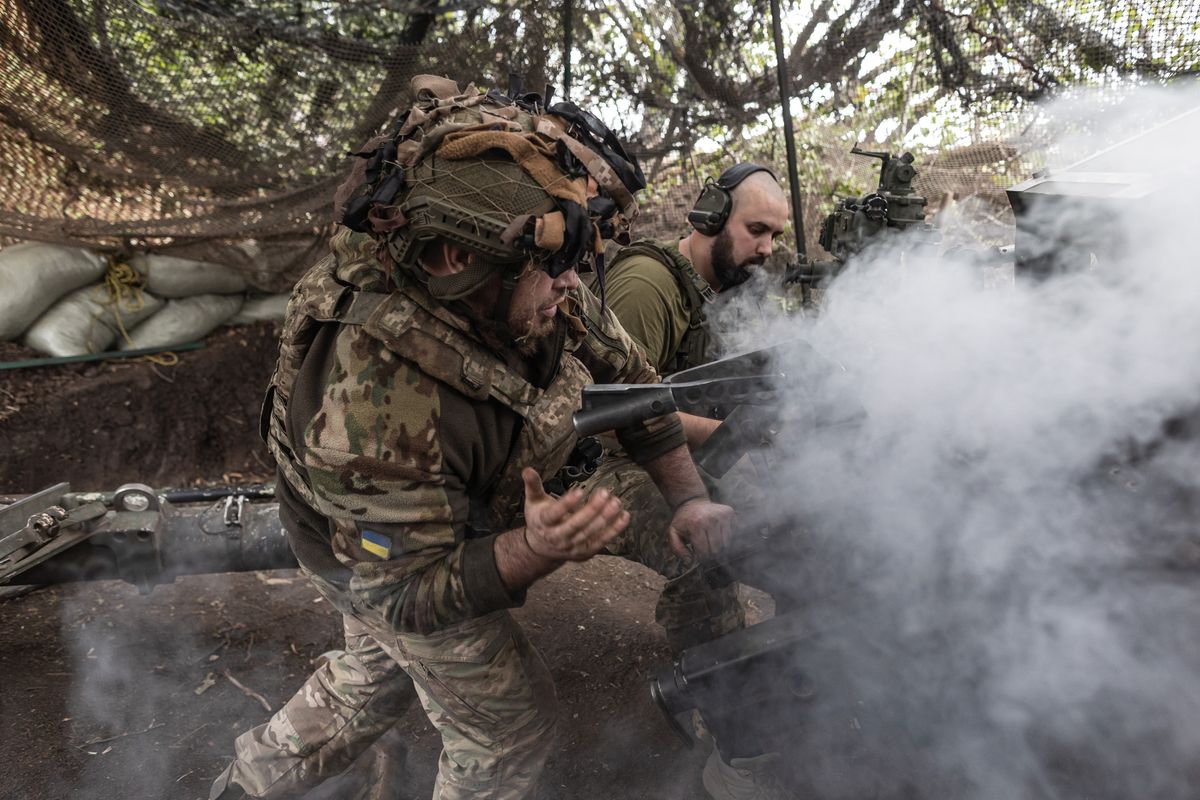Tim Willasey-Wilsey is a former senior member of the British Foreign Office and a Cipher Brief expert. He is currently a Senior Visiting Research Fellow at Kings College London’s Department of War Studies.
President Trump’s short walk inside North Korea on 30th June was great theatre; perfect for a politician launching his bid for re-election. It also had value in providing fresh evidence for Kim Jong-un of their “special friendship” at a time when Kim might be forgiven for wondering whether he had been forgotten as Washington’s foreign policy focus had shifted to Iran. Xi Jinping’s visit to Pyongyang on 20th June (the first by a Chinese leader to North Korea for 14 years) might have been an additional motive for Trump’s visit just in case Beijing was hoping to fill the vacuum left by the collapse of the Hanoi Summit.
The failure of the Hanoi meetings of 27th and 28th February has had significant effects in both Koreas. We know why it failed; because North Korea offered too little too late, to dismantle Yongbyon, and expected too much in the way of sanctions relief. What is less well understood is why Kim Jong-un misread the situation so disastrously.
The ride back to Pyongyang must have been deeply uncomfortable for all the passengers on Kim’s special train. In casting about for culprits to blame for his miscalculation Kim focussed immediately on his own negotiating team. Even allowing for the unreliability of such reports there appears to have been a purge of those officials deemed to have failed the Leader. Kim Hyuk-chol, the chief negotiator at Hanoi, is said to have been executed. Kim Yong-chol, the veteran former head of the Reconnaissance General Bureau, was supposedly sent for re-education although he appeared in an official photograph a few days later. Even the interpreter Shin Hye-yong may have been punished.
The next targets for Kim’s fury were in Washington; not President Trump, of course, but the advisors who must have led him astray; John Bolton, the hawkish National Security Advisor, and Mike Pompeo, the Secretary of State, who had already been the target of North Korean discourtesy on several occasions. To be fair to the hapless North Korean leader, he, like the rest of the world, is having to indulge in the old art of Kremlinology to understand how U.S. policy is being formulated. Is Iran and North Korea policy led by Bolton and Pompeo or by Tucker Carlson of Fox News who was credited with persuading Trump to step back from retaliation against Iran after the shooting down of a U.S. drone? Carlson incidentally visited the DMZ with Trump when Bolton was on a trip to Mongolia.
However a particularly cruel vein of retribution was reserved for the South Korean leader Moon Jae-in. Moon had played a deft hand in bringing the U.S. and North Korea together. He was the midwife of the Singapore Summit. But, like all mediators, he was playing a dangerous game; telling each side that the other would settle for less than their official position. In Hanoi this policy unravelled spectacularly. Kim Jong-un had been convinced that Trump needed a deal and would not travel as far as Hanoi unless success was guaranteed. He understood from Moon that Trump would agree to a partial relaxation of sanctions in return for some moves towards denuclearisation, even if these fell short of CVID (Comprehensive Verifiable and Irreversible Denuclearisation) or even the production of a full nuclear inventory.
Moon could be forgiven for offering this advice. There had been hints from Washington that a deal along these lines was possible. Stephen Biegun had said at Stanford on 31 January; “We did not say we will not do anything until you do everything.” But in Hanoi, the North Koreans offered Washington less than Seoul had recommended. Meanwhile, John Bolton had stiffenes Trump’s resolve and the President’s attention was diverted by Michael Cohen’s testimony to Congress. The talks broke down and, in the hours that followed, feverish attempts were made by Kim to bring Trump back to the table but it was too late.
Since the collapse of the Hanoi Summit the South Koreans have done their utmost to preserve good relations with Pyongyang. But shortly after donating 50,000 tonnes of food aid (worth $8 million) North Korea warned Seoul on 27th June that the negotiation with the U.S. “is absolutely not an issue where the South Korean government can meddle in”. The spokesman added “South Korean officials are acting as if there are various exchanges and behind-the-scenes talks between the North and South; there are none”.
There was another sign that South Korea may be cut out from a future mediation role. Hitherto the veteran spy-chief Kim Yong-chol had been involved in the negotiations. He was head of the “United Front Department”, the office of the Workers’ Party which focuses on South Korea. Contacts with Washington are now being led by Foreign Minister Ri Yong-ho, his deputy Choe Son-hui and Kim Myong-gil,; all from the Ministry of Foreign Affairs. This suggests a bilateral negotiation unless the U.S. insists on South Korea’s continued involvement.
Washington may not come to the rescue of Moon. With legislative elections due in April 2020 and with South Korea’s right-wing party gradually recovering from the fall of Park Gyun-hye, President Moon needs to show some progress on North Korea. With foreign policy in Washington being driven by the whim of a President already in election-mode and with policy intentions still unclear, Moon will be very fortunate if he can rescue something from the wreckage of Hanoi.
Read more from Tim Willasey-Wilsey in The Cipher Brief
Join The Cipher Brief March 22-24, 2020 for in-person briefings with a number of Cipher Brief experts on global and national security issues. Request your seat at the table today for The Cipher Brief’s Annual Threat Conference in Sea Island, GA.












